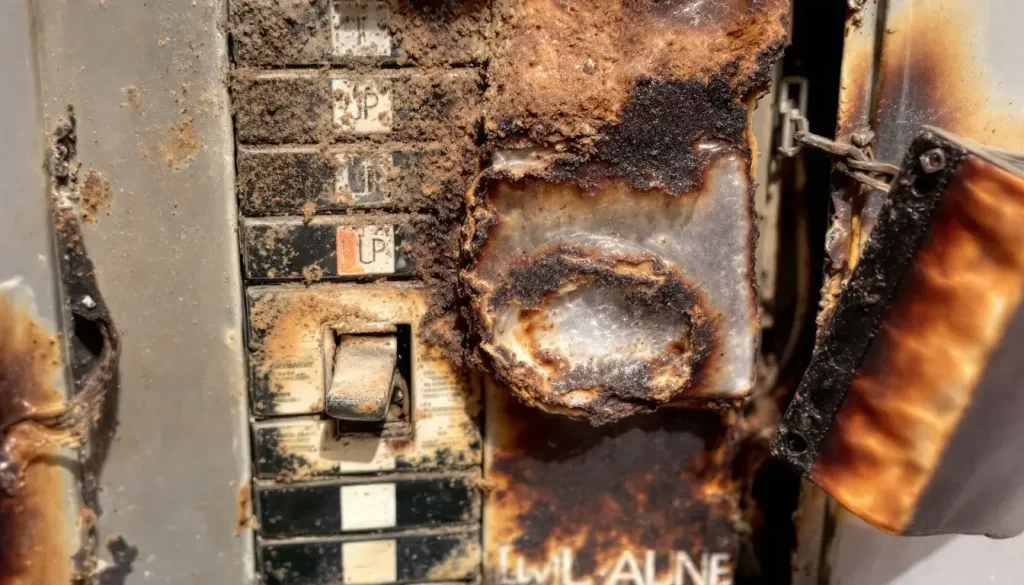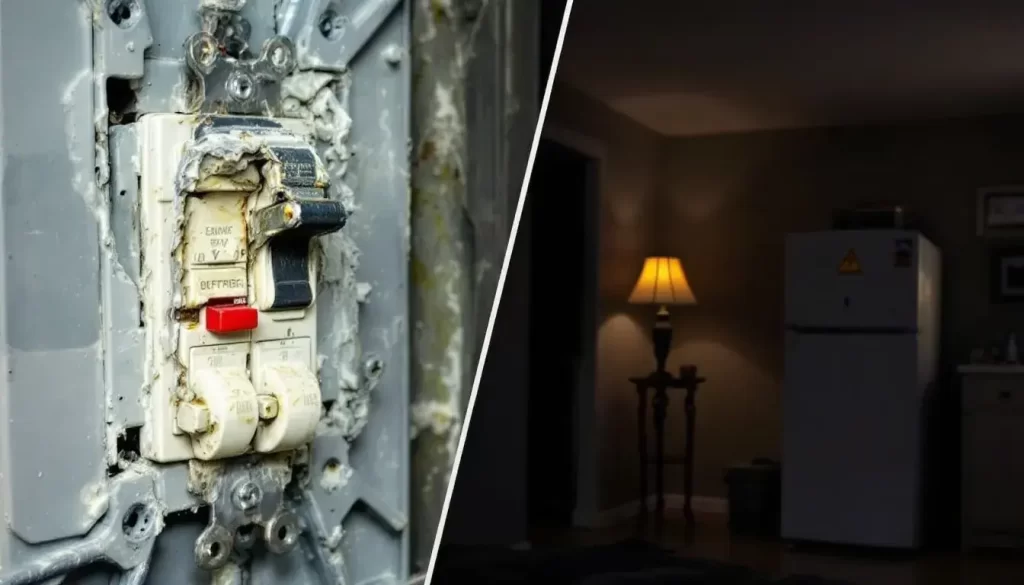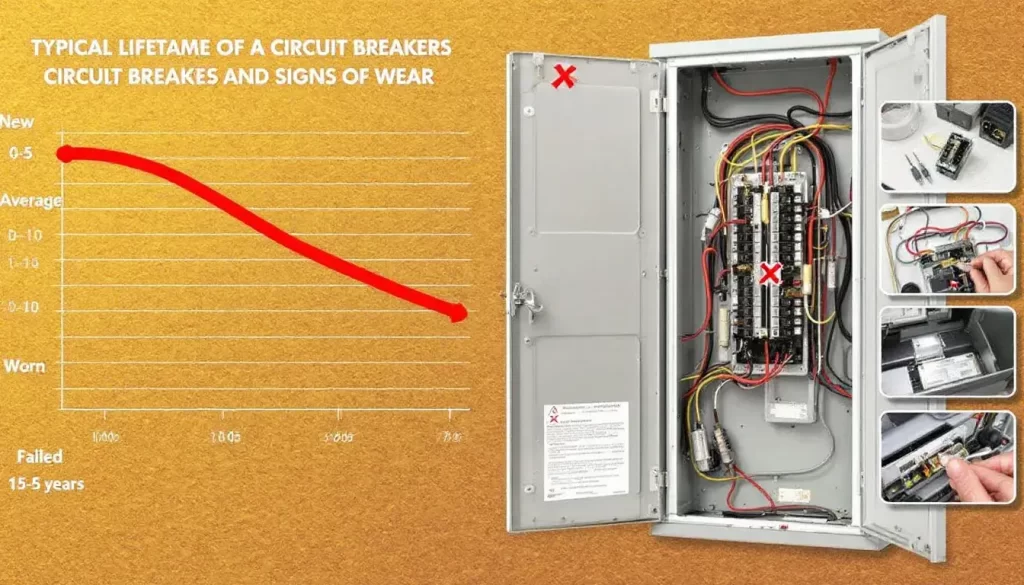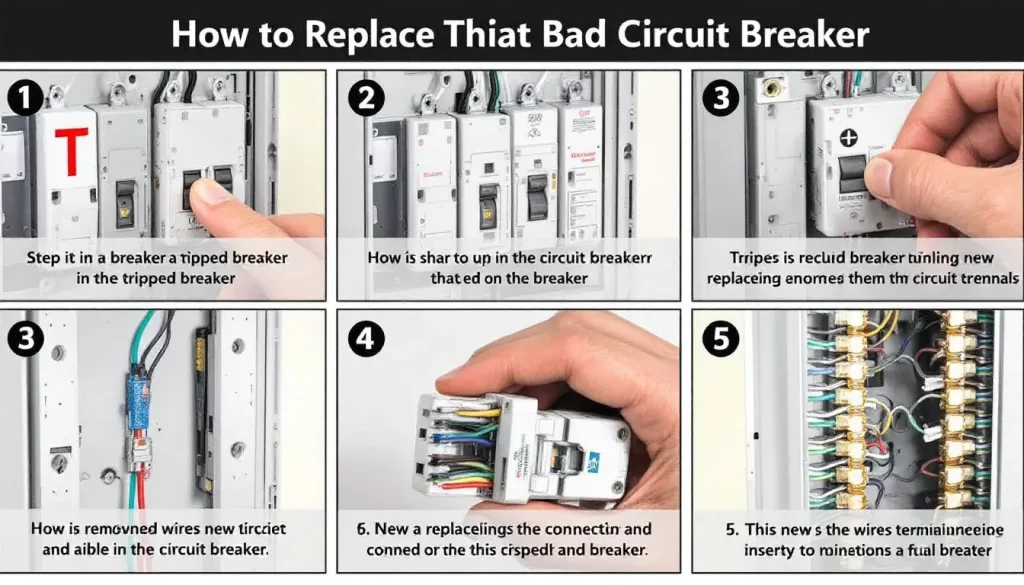How to Tell If a Circuit Breaker Is Bad: Essential Warning Signs
Table of Contents
ToggleDid you know that faulty electrical systems are a leading cause of home fires? Understanding how to tell if a circuit breaker is bad is crucial for preventing such hazards.
This comprehensive guide will help you identify warning signs of a malfunctioning circuit breaker, such as frequent tripping, burning smells, and poor appliance performance. You’ll learn about the lifespan of circuit breakers, the importance of regular maintenance, and when to call a professional electrician.
Whether you’re experiencing flickering lights or curious about preventative upgrades, this article covers all your electrical needs to keep your home safe and efficient. Dive in to ensure your home’s electrical system is functioning at its best!
Common Indicators of a Faulty Circuit Breaker

Understanding the signs of a faulty circuit breaker is crucial for keeping your home safe and your electrical system efficient. Here are some clear indicators that your circuit breaker might be having issues:
- Frequent Tripping
If your circuit breaker keeps turning off, it might be a sign of a problem. Frequent tripping happens when too much electricity is used on one circuit or there’s an internal fault.
If this occurs more than three times a month, it’s best to call a licensed electrician to diagnose the issue. You might need to upgrade the breaker or adjust how your electrical load is distributed.
- Visible Damage
Check your circuit breaker for visible damage such as scorch marks, melted wires, or heat on the walls and outlets. These are clear signs of serious internal issues that need immediate attention.
Ignoring such damage could lead to electrical fires or more extensive damage to your home’s electrical system. If you see these signs, unplug any connected appliances and get professional help right away.
- Burning Smell
A burning smell near your electrical panel is a serious warning. This odor often means that the wiring is overheating, which can be caused by a bad circuit breaker. If you notice this smell, turn off the main power immediately and contact a licensed electrician.
- Breaker Won’t Reset
If a breaker won’t reset, it could mean there’s a major internal problem or a short circuit. This issue can lead to inconsistent power supply, causing appliances to malfunction. Don’t ignore a breaker that won’t reset; seek professional help to find and fix the root cause. This will ensure your home’s electrical system is safe and efficient.
By recognizing these signs early, you can prevent further damage and ensure your home’s electrical safety. Remember, regular inspections and maintenance by a professional electrician can help keep your circuit breakers in good working condition.
Performance Issues Linked to Bad Circuit Breakers

Faulty circuit breakers can lead to problems in your home’s electrical system. Here are some signs to watch for:
Flickering Lights
If your lights flicker or dim, especially when more appliances are in use, it might be due to a failing circuit breaker. This is a common issue and can affect multiple lights at once, indicating a bigger problem with the breaker.
Poor Appliance Performance
When a circuit breaker is faulty, appliances may not work properly. For example, your oven might not heat evenly, or your washing machine might stop unexpectedly. This happens because the breaker isn’t supplying a steady flow of electricity.
Power Fluctuations
Inconsistent power supply can cause appliances to malfunction or stop working. If you notice power fluctuations, it may be due to issues with the breaker or electrical panel. This can lead to increased energy bills and potential damage to your devices.
If you notice these signs, it’s important to contact a licensed electrician. They can identify the problem and ensure your home stays safe and efficient.
For instance, a study by the Electrical Safety Foundation International (ESFI) shows that faulty electrical systems are a leading cause of home fires, highlighting the importance of addressing these issues promptly.
Lifespan of Circuit Breakers: What You Need to Know

Circuit breakers are designed to last between 30 to 40 years. However, their lifespan can vary based on the quality of the breaker and how often they handle electrical surges or overloads. Regular checks are essential to spot issues early.
If a circuit breaker is of poor quality, it could fail within weeks or months, posing safety risks. Regular inspections and maintenance can help identify and fix problems early, preventing costly repairs and ensuring your home’s electrical system remains safe.
Scheduling a professional electrician to inspect your circuit breakers periodically ensures they are functioning correctly and can handle your home’s electrical demands.
Preventative Maintenance and Upgrades
Keeping your home’s electrical system in top shape is crucial for safety and efficiency. Here’s a simple guide to help you understand the importance of preventative maintenance and upgrades:
Why Maintenance Matters
Regular maintenance is key to ensuring your electrical system runs smoothly. Wear and tear, extreme temperatures, and dust can damage circuit breakers, shortening their lifespan. Breakers can last 30 to 40 years, but without care, they may fail much sooner.
Steps to Maintain Your System
- Regular Inspections: Have a professional electrician inspect your system annually. This can catch potential problems early, saving you from costly repairs and keeping your system safe.
- Upgrade Your Electrical Panel: Older panels might not handle modern energy demands, leading to frequent trips and safety hazards. Upgrading can prevent these issues and improve efficiency. For example, a new panel can handle up to 200 amps, compared to the 60 amps of older models.
- Prevent Overloaded Circuits: Spread out your appliance usage across different circuits. This avoids overloading, which can cause overheating and fire risks. Use energy-efficient appliances to reduce strain on your system.
When to Call a Professional
If you’re unsure about maintaining your electrical system, consult a licensed electrician. They can provide expert advice and ensure your home is safe and up-to-date.
By following these simple steps, you can extend the life of your circuit breakers and keep your home’s electrical system running efficiently.
How to Replace a Bad Circuit Breaker

Replacing a bad circuit breaker is a task that needs care and safety. Here’s a simple step-by-step guide to help you:
- Turn Off the Main Power: Before starting, make sure to turn off the main power supply to avoid any electrical hazards.
- Identify the Breaker: Check the brand, type, and size of the breaker you need. This ensures you get a compatible replacement for your electrical panel.
- Remove the Old Breaker: Carefully pivot the old breaker out. Be cautious not to touch the metal bus bar, which can be dangerous.
- Attach the Wires: Connect the black circuit wire and any neutral wires to the new breaker. Make sure the connections are secure.
- Install the New Breaker: Place the new breaker into the panel and ensure it fits snugly.
- Replace the Panel Cover: Once everything is in place, put the panel cover back on.
- Test the Circuit: Turn the main power back on and test the new breaker to make sure it works properly.
If you’re unsure about any step, it’s best to call a licensed electrician. They can handle the replacement safely and efficiently, ensuring your electrical system is in good working order.
Summary
Recognizing a bad circuit breaker is key to keeping your home safe and efficient. Look for signs like frequent tripping, visible damage, burning smells, and breakers that won’t reset. These issues can lead to safety hazards and should be fixed quickly.
Regular maintenance, such as yearly inspections and upgrading old panels, helps your electrical system handle modern energy needs. If you notice any problems, call a licensed electrician to ensure everything is working safely and efficiently.
Frequently Asked Questions
Can a circuit breaker be bad without tripping?
Yes, a circuit breaker can fail without tripping, indicating it needs to be replaced to ensure proper functionality and safety. It’s crucial to address this issue promptly.
How do I test a circuit breaker?
To test a circuit breaker, ensure your safety by turning off the main power. Then, access the circuit breaker panel and set your multimeter to the appropriate setting. After testing the circuit breaker, double-check your results to confirm functionality.
How do I know if a circuit breaker is bad?
A bad circuit breaker may show damage marks around the outlets or the breaker itself, and failures in appliances due to melted wires are strong indicators. If you observe any of these signs, it is essential to seek immediate professional assistance.
What are the common signs of a bad circuit breaker?
Frequent tripping, visible damage like scorch marks, a burning smell, and an inability to reset the breaker are clear signs of a malfunctioning circuit breaker. Addressing these issues promptly is crucial for safety.
Why do circuit breakers trip frequently?
Frequent tripping of circuit breakers often indicates an overloaded circuit, a faulty breaker, or a short circuit. It’s crucial to consult a licensed electrician to address these potential underlying electrical issues.
Tel: +86-577-88671000
E-mail: ceo@tosun.com
Skype: tosunelectric
Wechat: +86-139 6881 9286
WhatsApp: +86-139 0587 7291
Address: Room No.1001 Wenzhou Fortune Center,Station Road, Wenzhou, China
REQUEST A QUOTE
WhatsApp us
 : +86-139 0587 7291
: +86-139 0587 7291 English
English Español
Español Русский
Русский Français
Français العربية
العربية Português do Brasil
Português do Brasil Українська
Українська Türkçe
Türkçe Polski
Polski Nederlands
Nederlands Italiano
Italiano Bahasa Indonesia
Bahasa Indonesia हिन्दी
हिन्दी اردو
اردو አማርኛ
አማርኛ Հայերեն
Հայերեն ไทย
ไทย Монгол
Монгол فارسی
فارسی Shqip
Shqip Ελληνικά
Ελληνικά


